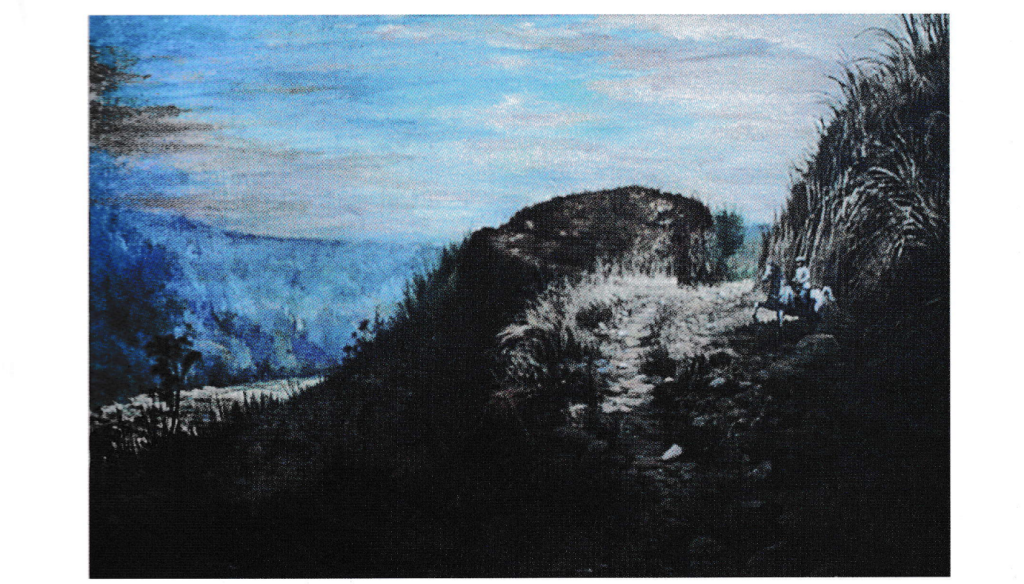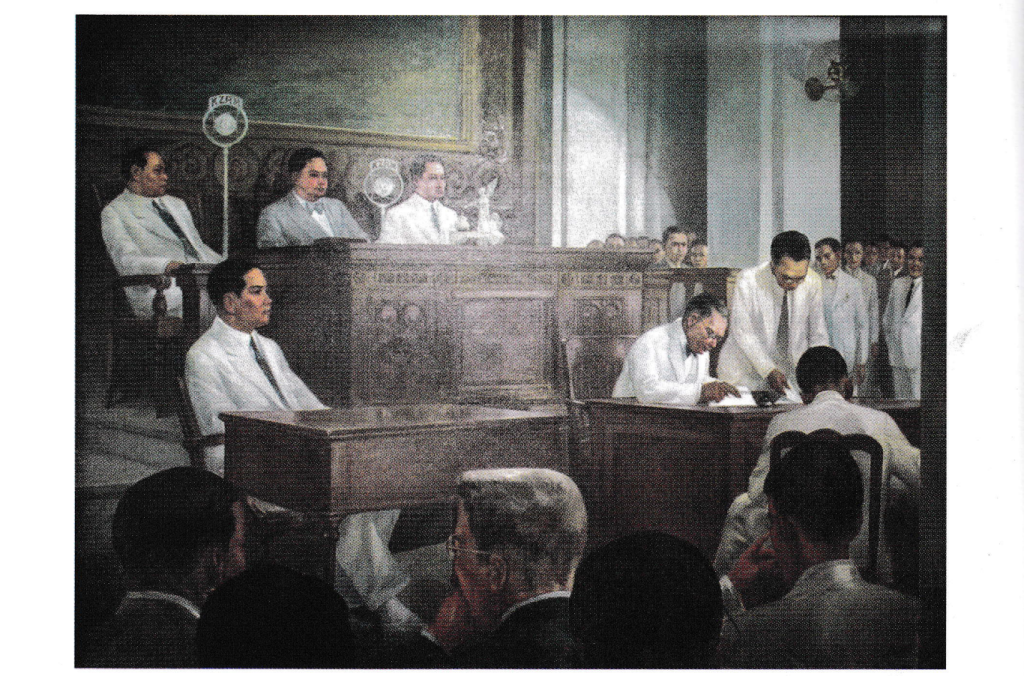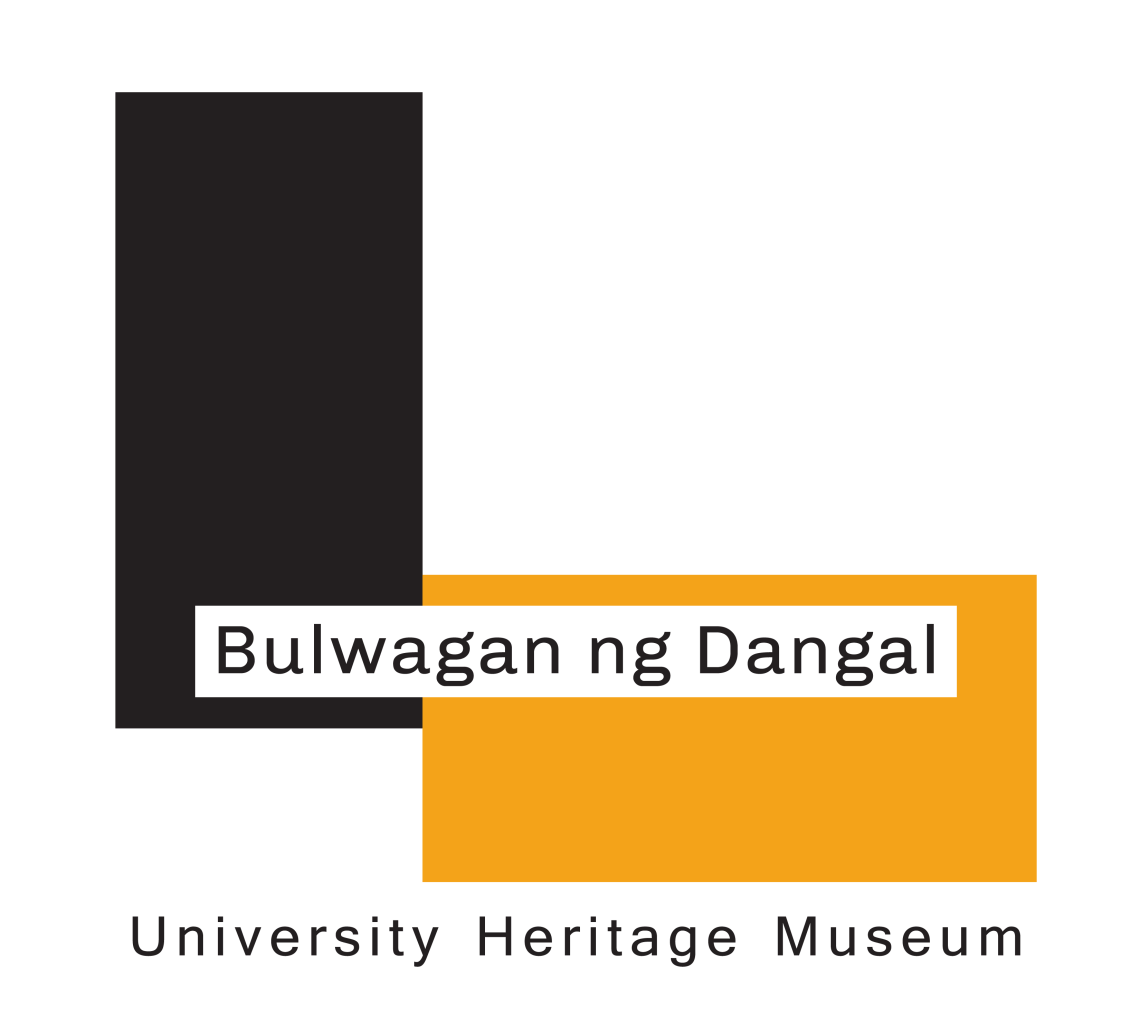(Written by Patrick D. Flores for the inaugural exhibition of the Bulwagan ng Dangal, entitled “Pag-asa ng Bayan,” published in the exhibition’s accompanying catalog)
A collection lives only because it is recollected, recalled from seclusion and cherished with renewed interest, the better if it is beheld as if for the first time, except that this “once-over” brings with it a deep and intimate history “time and again.” A collection with a long past finds its path towards the future only because it is remembered, made to belong again to a community of other works in other places that root it “at the same time” and so is led to inhabit a common ground and moment. In other words, the collection becomes contemporaneous with the everyday life of a universe beyond its own origin, its foundational impulse.
The visual arts collection of the University of the Philippines has had its tales of recollection and remembering across eventful years of an always steadfast and compromised institution. First, it was inventoried by two professors of the Fine Arts from 1985 to 1986 under the auspices of President Edgardo Angara. Second, it was reconsidered for an exhibition marking the watershed Philippine revolution of 1896-1898 in 1996 by way of Philippine History in Art: A Promenade to the Past, which inaugurated the Corredor of the College of Fine Arts. Third, in 1999, the portraits of the university presidents took center stage in At the Helm of UP: Presidential Accents. Fourth, to commemorate the centenary of the University in 2008, a significant section of the corpus was brought out for Lineage of Mentors: The National Artists for the Visual Arts of the University of the Philippines, mingled with the collection of the National Art Gallery at the National Museum of the Philippines. In these four instances, the collection was always viewed as an intersection of different terrains of nation: history, art, university. It was also made to overcome confinement and the drift towards obsolescence.
The exhibition Pag-Asa ng Bayan sustains the commitment to ceaselessly recollect and remember the artistic oeuvre of the University of the Philippines, subjecting it to cycles of critique by the scholars of the school and the public that it gathers. Furthermore, it initiates a series of projects designed to present the University of the Philippines visual art collection at Bulwagan ng Dangal (University Heritage Museum), a space in the University Library dedicated to heritage. The collection is situated in a wider context of interactions with other collections in the country as well as with contemporary art, and will be continually reawakened by the ever-present art of the students, faculty, and alumni. The title, taken from the hymn of the University, speaks of the possibility of change that animates a forever expectant nation and people.

In keeping with this spirit, the exhibition reveals the strength of the UP trove in the realm of commemorative and public art, from portraiture to monumental sculpture. As these forms try to mark turning points in the triumph of culture and consciousness, so do other expressions evoke watersheds with a more fearless temper: social realism and abstraction offer equally compelling visions of critique and whimsy, further inflecting the legacy of the University with urgency and imagination. The history of UP informs this collection as it is constituted by it: its formation under an American aegis and the flourishing of the conservative quarter in the arts, the First Quarter Storm and the genealogy of a political pictorial idiom, and globalization and the current mutating visual culture where folk sentiment comes in contact with hypermedia.
At one level, this exhibition is a broad survey of pieces in the collection that affirms the standards of the cannon of Philippine art history, duly citing the stature of “masters” like Amorsolo and Tolentino and their works done in the habits of the academy, totems that have been ensconced in the order of things. At another, it is a disruption of this rhythm, a syncopation as it were generated by pieces that go against the beat of this custom and consequently measure an uncanny interval, testifying to the flux of the aesthetic in the milieu. And so, while there may be a semblance of posterity ingrained in busts and heroic paintings, there are around this fraught veneration traces of commentary about how, for instance, repression and social inequity have shaped other bodies and sentiments, a conflicting vision of the classical proportion or the pose of well being. Also, there are intimations of fantasy, a prefiguration of an “always incipient cosmos” lying outside quotidian reckoning but springing nevertheless from the intuition of a finite human agent constrained by material condition. Here, there is play, speculation, reverie and flight that is necessary to transform a world that has fallen apart. The collection is faithful to a committed and dreaming University.
All this comes together in Bulwagan ng Dangal that is envisioned to be a different platform that facets the many angles of art. It is not strictly speaking a museum, which when it falls into the hands of petty clerks of little irony and even lesser foresight becomes static, officious, and nearly useless, its holdings reduced to the sad statistics of a belabored registry. It is also not a gallery, which when governed by merchants becomes a mere integer of profit. It is more akin to a creative laboratory, interdisciplinary in orientation, open to the importuning of contemporary art, and always attuned to the experiments of artists and cultural workers from the gamut of instincts of the fine arts, humanities, anthropology, film, architecture, physics, education, economics, and so on. Another sphere that surrounds this arena is the University Library, which has an interesting estate of its own: memorabilia of artists, furniture, maps, incunabula, the devices of a scriptorium. In fact, some of the extraordinary systems for the space will be sourced from the library itself, resonances of the history of the locus.

Finally, this endeavor will not toil in isolation; it will rather seek links with the other collections of other objects within the University and outside its premises, rethinking the taxonomies that have torn the ecology of things asunder so that taxidermy and costume, baskets and stones, photographs and plants could be convened here, their network restored with wonder and contemplation. Needless to say, this space anticipates the many births of other museums in the University and the schemes in which they will work in cadence.
Bulwagan ng Dangal, conceived in the mind of National Artist for Architecture Juan F. Nakpil, dwells in the basement of the historic Gonzales Hall where the guts of the structure lie. It is said that such a place is for fools, where the mad are exiled and eccentrics tend their travails, where slaves are despoiled and casks of tempting wine await a prey. This is why we are all here. Real work on earth begins “out of this world.”
